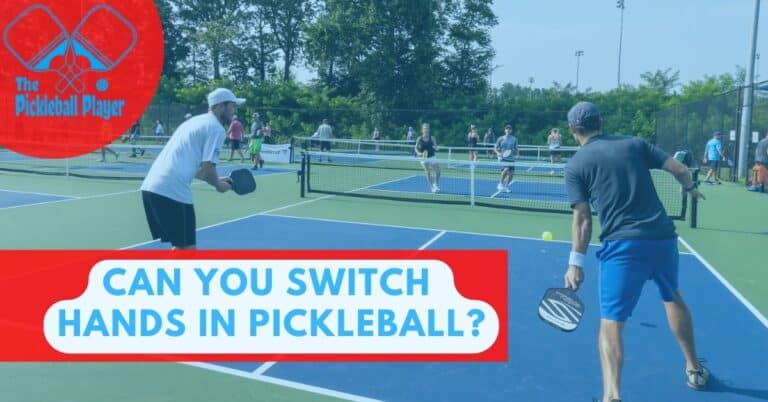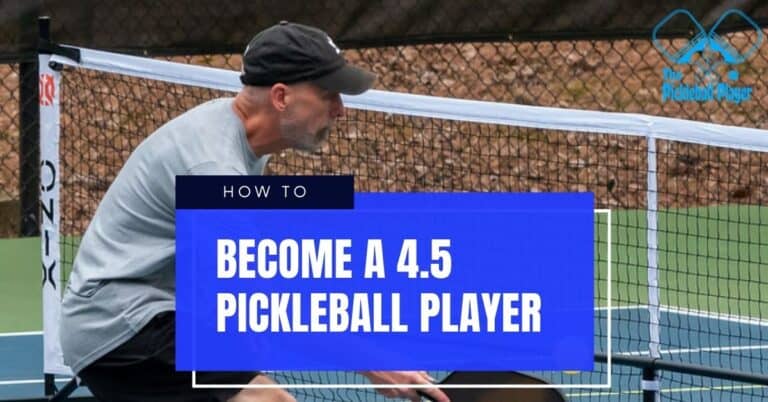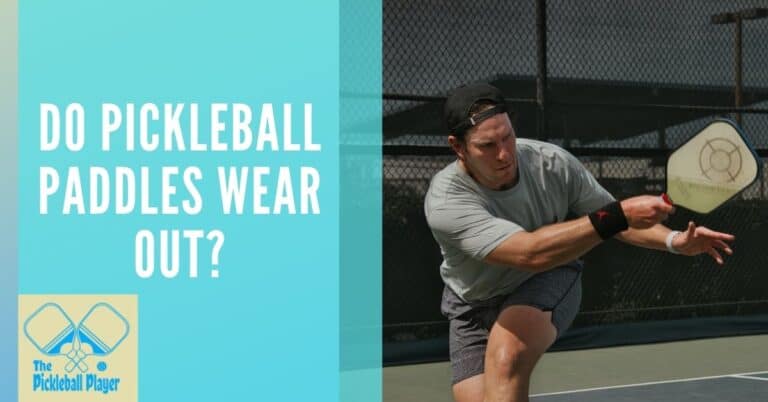What is Pickleball Stacking? Simple Explanation and Diagram
Do you ever feel stuck in the same side and position in a pickleball game, especially while playing doubles? It’s not very pleasant not being able to help your partner or use your full potential. That’s where stacking comes in.
According to the Oxford Dictionary, stacking is a neat arrangement of things in a pile or dishonest shuffling of cards to get an unfair advantage. However, stacking in pickleball is not dishonesty. It is an arrangement of players. It’s a strategy that you learn and master as you get better in your game.
Below, we explain what pickleball stacking is and how it works. We’ve also created some stacking diagrams that’ll help you understand it better.
Table of Contents
- What is Stacking in Pickleball?
- Pickleball Stacking Rules: Is Stacking Legal in Pickleball?
- Why Should You Stack in Pickleball?
- How to Stack in Pickleball? Stacking Strategy and Diagram
- Full Stacking vs Partial Stacking
- Some Confusions While Stacking in Pickleball
- The Bottom Line
What is Stacking in Pickleball?
Stacking in pickleball is a formation of players in doubles. It’s a game plan where both players stand on the same side of the court. They will move back to their favored position after serving or returning the serve.
Unlike traditional positioning (where both players stay at their side), in stacking, they try to gain an advantage by using their forehand to cover the middle. They do that by positioning themselves on their preferred sides.
Pickleball Stacking Rules: Is Stacking Legal in Pickleball?
When you see a strange positioning of players, it’s confusing and seems wrong. Some beginners might consider stacking as one of the ways to cheat in pickleball. However, stacking is legal and acceptable, as there are no rules for positioning in pickleball.
The only rule you have to follow while serving or returning the serving shot is;
where the server will stand and to whom he will serve. Also, the rules specify who the receiver should be and where the receiver must stand.
There are no legal restrictions or rules that say they can’t move positions and hit from anywhere. Only the server has to follow the rules. The second player can stand anywhere in the court of his side.
Similarly, the receiver has to stand at their position. Yet his partner can stand anywhere, even outside the court (on their side of the court, of course).
Why Should You Stack in Pickleball?
There are some situations where it is great to have mastered the stacking technique. You can use it to take advantage of your strengths and hide your weaknesses. Or you can stack to confuse your opponents.
- You might stake it when one of the team members is weak or their backhand is not strong.
- If a teammate has a strong forehand, you can use his strength and stack so that he can cover more middle ground.
- In some cases, when one player is a lefty, and the other is right-handed, it’s a good idea to stack. Left-handed players can move to the right and right-handed to the left side of the court. It allows them to have a strong forehand and cover the middle area.
Whatever the case, the stacking technique will only work if you are well-synchronized with your teammate.
How to Stack in Pickleball? Stacking Strategy and Diagram
Before understanding how staking works, knowing the traditional positioning in pickleball and the serving rules is better. In traditional form, both players stand and serve on their respective sides, one on the ad and the other on the deuce side.
Even if their strength lies in their position, they have to change their position once they score a point. In this case, score controls the game, and players are forced to leave their ideal positioning.
Pickleball Stacking Strategy With Left-Handed Players
Let’s say that you are a pair of left and right-handed players with a strong forehand. The ideal positioning for you will be if a right-handed player plays on the left side of the court and a left-handed player on the right side of the court, which can only happen by stacking. In this case, you will be strong in the middle and can hit better shots.
Stacking Strategy during Serve
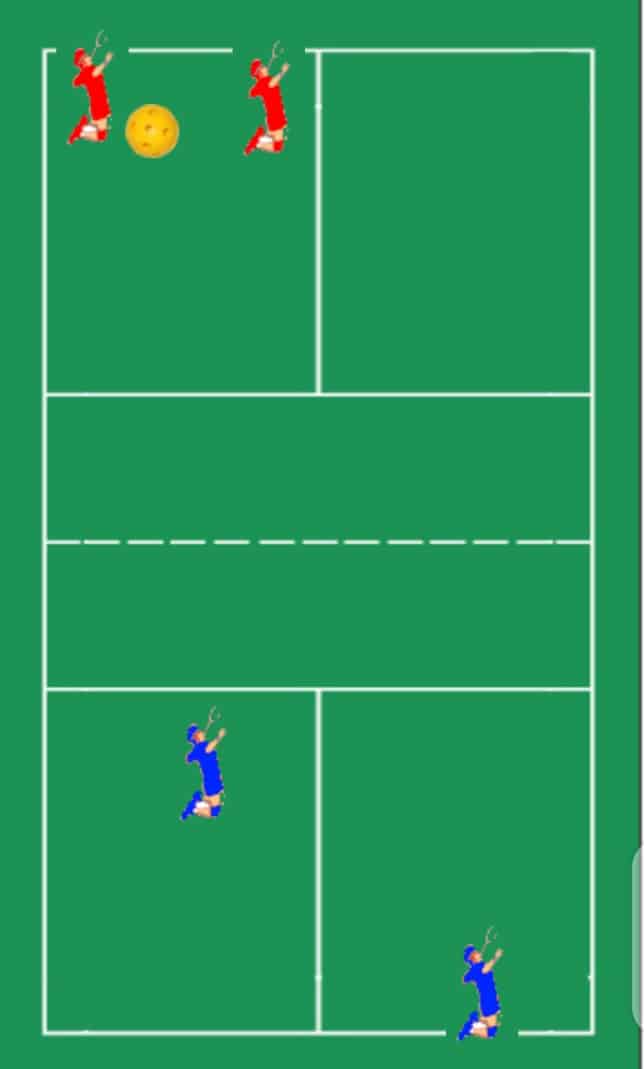
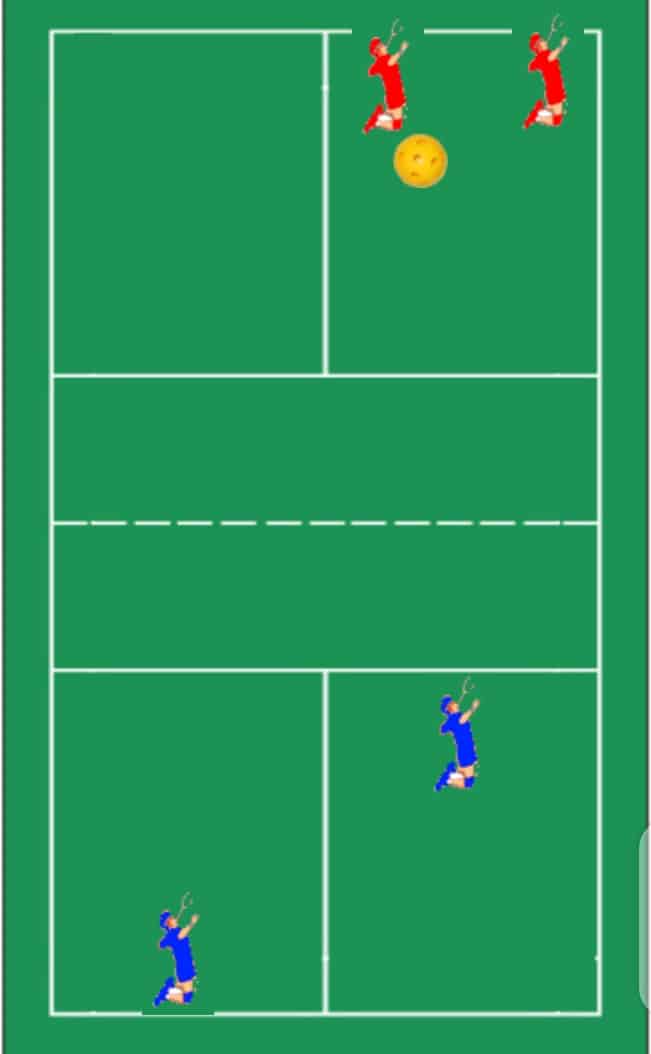
When a left-handed player starts the serve, and you score one point, the start-server has to move to the left side for serving, which is the odd side. You don’t have to leave your place and go to the right side, instead stay on the side. After serving, your partner will move back to his position (right side).
This formation will optimize your strengths. You get the chance to use stacking to win the rally.
Stacking Strategy During Return of Serve
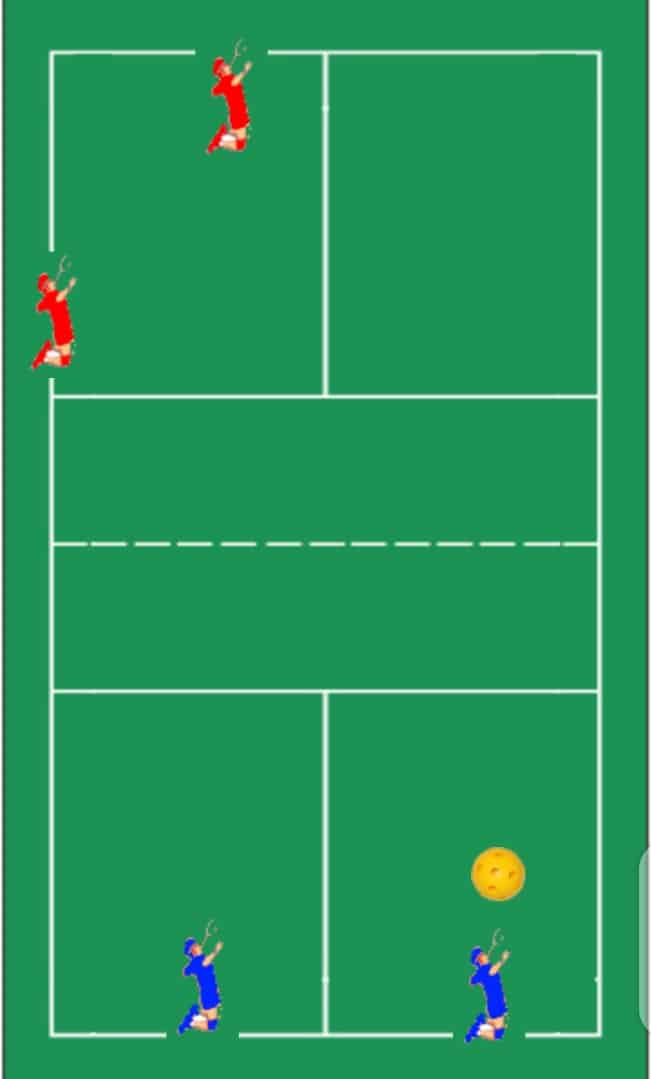
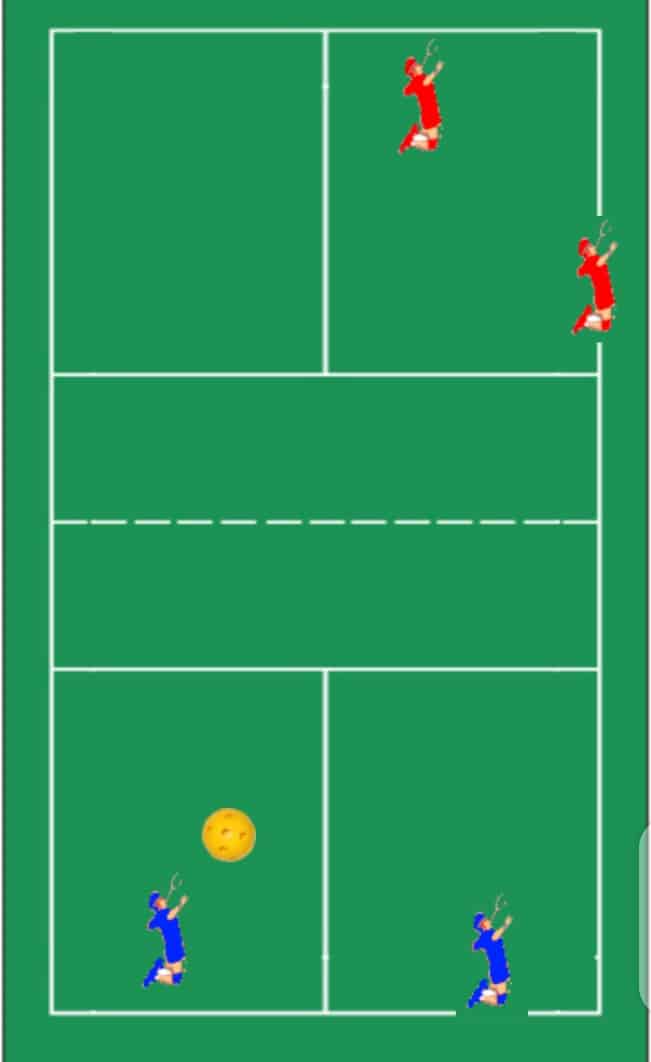
When returning the serve, both players will stay on the same side of the court, either even or odd. The player returning the serve will stand near the baseline. The other one will stand out of the sideline, but close to the non-volley zone line.
As soon as the returner hits the ball, they will rush to the opposite side and his preferred position, while the other player will slide in the near court. Once again, both players are ready to take the balls with heavily defended middle.
Sometimes players intend to trick their opponents and stay in their traditional positions while returning the serve. The returner will signal you to change position as soon as he hits the ball. After the return, both players will stand in their preferred position.
When switching sides, you should use hand signals to inform your partner in advance.
Remember: While returning the ball, make sure to hit long and high, so you get enough time to cross over and position yourself. It’s also important that both players are fit and run quite a bit. So they can take their positions before the ball comes back.
Full Stacking vs Partial Stacking
When your team decides to stack for every serve and return, that is a full stacking. It can give you an edge but is confusing as it can be hard to track who should stand where.
In partial stacking, your team decides to do stacking for serving only. You only change position when you have to serve, but keep your traditional positioning while returning the serve.
Some Confusions While Stacking in Pickleball
One mistake that is very common in stacking and happens to the best of us is: which player is serving and returning the serve, and which side of the court should we use. You can take note of these points to avoid mistakes.
- Remember your score and the first server of the stacking team.
- The first server will serve from the even side when the score is even and from the odd side when the score is odd.
- The first server must remember the score to stand on the right side for returning.
The Bottom Line
Despite being easier than other sports like tennis, advanced strategies make pickleball a bit tricky and tough. Stacking is a technique anyone can learn and master with practice and concentration. It is a great advantage to use stacking when righty and lefty players have strong forehands. Or when your partner is lacking somewhere. For example, they are not strong with their forehand or backhand.
As a recreational player, you might not be interested in using this technique. However, it’s vital to understand it, so you can know what your opponents are doing and how to tackle stacking.
But if you have to become pro pickleball player, you must learn and practice stacking.

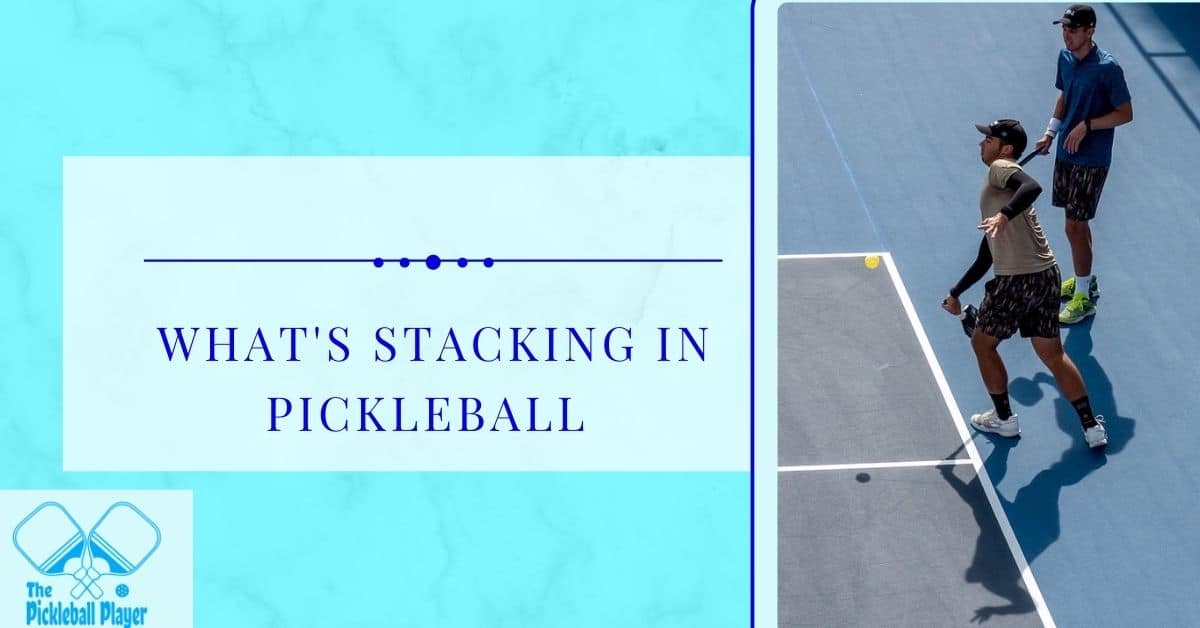
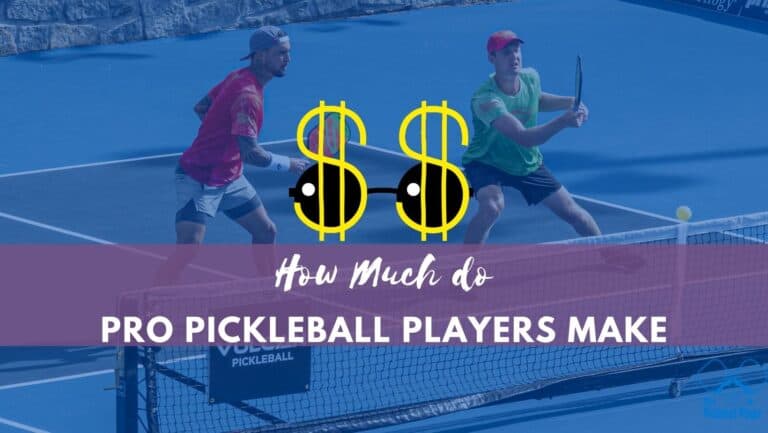
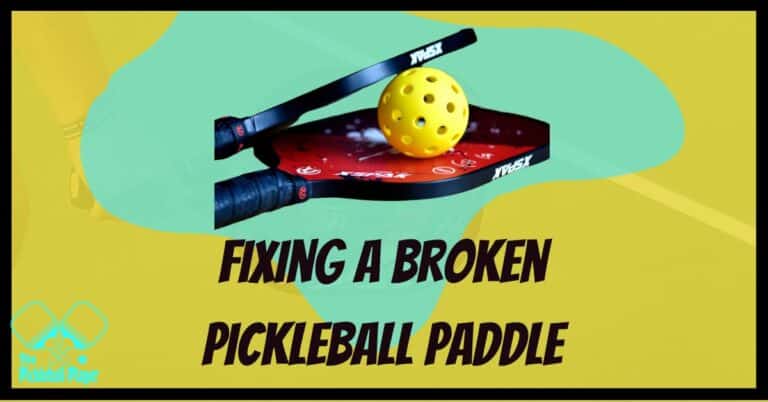
![Do Pickleball Paddles Matter? [Yes, Here’s Why]](https://thepickleballplayer.com/wp-content/uploads/2023/03/Do-PICKLEBALL-PADDLES-matter--768x402.jpg)
